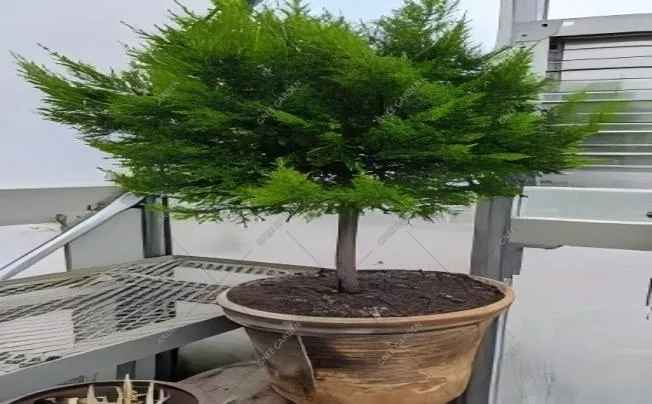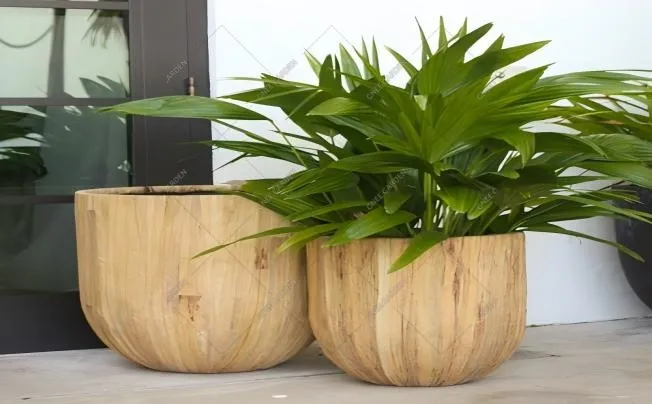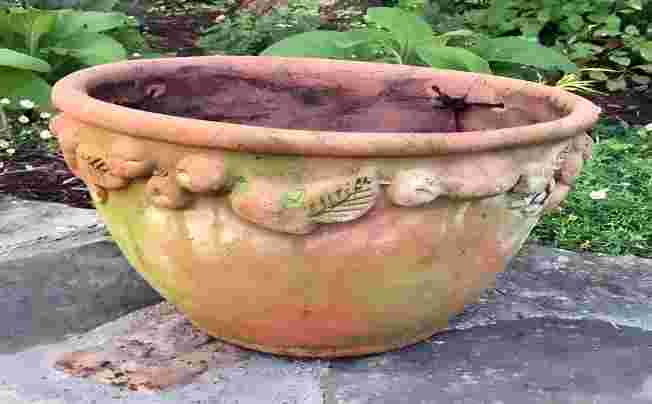What Makes A Good Flower Pot?
The quality of flower development is greatly influenced by flower pots. Despite their seemingly mundane appearance, flower containers are surprisingly packed with wisdom. Which flower containers are the greatest option, then?
Accurate selection of depth and size
The root properties of different flowers vary. The shallow roots of succulent plants are mostly found on the soil's surface. Shallow pots can accommodate their growth needs because too much or too deep soil can quickly cause waterlogging and root rot. On the other hand, flowers like Clivia have fleshy, developed root systems that need deep soil to establish root. The root system cannot spread out, nutrient absorption is restricted, and plant growth is slow if the flowerpot is too shallow. Consider the ubiquitous green radish. The majority of its roots are capillary roots that are dispersed across the shallow soil. Select a flowerpot that is 15 to 20 cm deep, but if you are planting peony flowers, which have deep roots, the flowerpot depth needs to be at least 30 cm deep to give the roots room to spread out and create a strong base for the blooms to flourish.
The flowerpot's diameter has an impact on the plant's overall appearance and growing area. Typically, seedlings are placed in small-diameter flowerpots, which are progressively swapped out for large-diameter flowerpots as the plants mature. In contrast, if a large plant is planted in a small flower pot, the roots will curl up, growth will be impeded, and the plant will not be able to exhibit the vitality it should have. If the seedlings are initially placed in a large flower pot, there will be too much soil, the roots will not be able to fully absorb nutrients, and water will easily accumulate, increasing the risk of root rot. For little succulents, for instance, the first flower pot diameter may be 6 to 8 cm. When the crown extends above the flower pot's edge, it can be swapped out for a flower pot that is 10–12 cm in diameter. A huge Monstera typically requires a flower pot that is more than 30 cm in diameter to accommodate its lush branches and leaves and maintain a green space.

Flower pots of various materials
Flower pots made of plastic are inexpensive, lightweight, and available in a range of hues. They are not scared of bumps and move with ease. They are safer for families with kids or pets who are prone to tipping over flower pots, or for flower producers who are weaker. But because of their low air permeability and difficulty allowing water to escape, water can readily accumulate, causing soil compaction and impairing root respiration. As a result, they work better for growing plants that can withstand dampness, like Monstera and Pothos. Green plants like Monstera and Pothos can be grown as seedlings in plastic pots, which is both practical and convenient.
Clay, the material used to make ceramic pots, has exceptional water and air permeability. They significantly lower the risk of root rot, let air easily move through the soil's pores, provide the roots with fresh oxygen, and successfully stop the spread of fungus-related illnesses. However, carrying ceramic pots requires some effort due to their weight. Additionally, they are delicate and readily harmed by unintentional impacts. As a result, ceramic pots are the ideal option for planting succulents, cacti, and other water- and drought-resistant plants in fixed indoor locations.
Among ceramic pots, the purple clay pot is a good product with a sophisticated and beautiful appearance. Frequently, inscriptions, landscapes, flowers, birds, and other images are etched on the pot wall. It exudes a strong artistic aura and an air of antiquity. It is significantly superior than ceramic pots and can satisfy the "breathing" requirements of the majority of flower roots, while having a slightly lower air permeability than regular ceramic pots. But because of its intricate manufacturing process, expensive cost, and low water permeability, it requires careful consideration of watering frequency and quantity to avoid water buildup and root rot. It can fully display the exquisite style of flowers and is appropriate for the upkeep of Clivia, orchids, and other beautiful flowers with specific air permeability requirements.
Ceramic flower pots contain beautiful painted designs, are strong and long-lasting, and are fired at high temperatures. They are able to provide a beautiful floral show. They may be positioned to immediately improve the aesthetics of the living room, balcony, and other areas. Its limited water and air permeability means that the only way to ventilate and drain the soil is through the drainage hole at the bottom. It is quite easy to cause water accumulation and jeopardise the plants' health if it is not properly managed. As a result, soil preparation for ceramic pots should pay closer attention to drainage. It is possible to add more granular substrates, like vermiculite and perlite. It works well for growing flowers like phalaenopsis and azaleas that prefer a humid atmosphere and don't need a lot of air permeability.
Stainless steel, iron, and galvanised flower pots are examples of metal flower pots that are strong, long-lasting, have a variety of shapes, and have a contemporary appearance. They are simple to incorporate into a variety of decorating styles and provide the room a stylish feel. Additionally, stainless steel flower pots may be adjusted to various climates and environmental circumstances and are resistant to corrosion, high temperatures, and cold temperatures. On the other hand, metal conducts heat quite well. Winter cold will hasten the soil's loss of heat and cause the roots to freeze. Therefore, when using metal flower pots, it is important to consider warm protection in the winter and shade and cooling measures in the summer. It is appropriate for planting certain flowers, like pine and cypress bonsai, that have strong adaptability and roots that are comparatively resistant to heat and cold.
Because glass flower pots are so clean and transparent, they can clearly see the level of soil moisture and root development. They are ideal for hydroponic flowers because they come in a variety of specifications and distinctive designs. In addition to adding beauty to the space, placing glass flower pots filled with plants such spider plants, white peace lily, and green radish on desks indoors can help improve air humidity and create a mini paradise. However, glass is fragile and unable to supply enough oxygen for the roots of flowers grown in soil because it is totally airtight. To prevent collisions, employ additional caution when using it every day.

Durability and stability
The safe usage of flower pots is linked to stability, particularly when they are set up on desks, windowsills, and outside. Not only will the flowers be harmed if a flower pot topples over, but other objects might sustain damage as well, and there might even be safety incidents.
The centre of gravity is high for flowers with tall plants, lush branches, and leaves, like rubber trees and lucky trees. To reduce this centre of gravity, improve stability, and avoid tipping from wind or collision, heavy and sturdy flower pots are required, such as cement flower pots with wide bottoms and thick ceramic flower pots. Large flower pots put in outside gardens can also be partially buried beneath to strengthen their foundation; if the ground is smooth, a non-slip mat can be placed at the bottom of the flower pot to further stabilize it indoors.
Small flower pots are commonly used on windowsills and desktops, which are small areas. Selecting flower pots with trays or bases will help keep them from slipping when touched by accident. In addition to being aesthetically pleasing, some lovely little ceramic flower pots have wooden or plastic trays at the bottom. Additionally, when watering, the tray can catch extra water that leaks out, keeping the desktop neat and dry.

Selected Blogs
-
What customization services are available for metalworking customization?
2024-12-12
-
What Is The Difference Between A Plant Container And A Raised Bed?
2024-04-23
-
Garden Screening & Fence Panels
2024-04-23
-
Gardening pot selection tips
2024-04-17
-
The function and collocation of horticultural fire pot
2024-04-17


